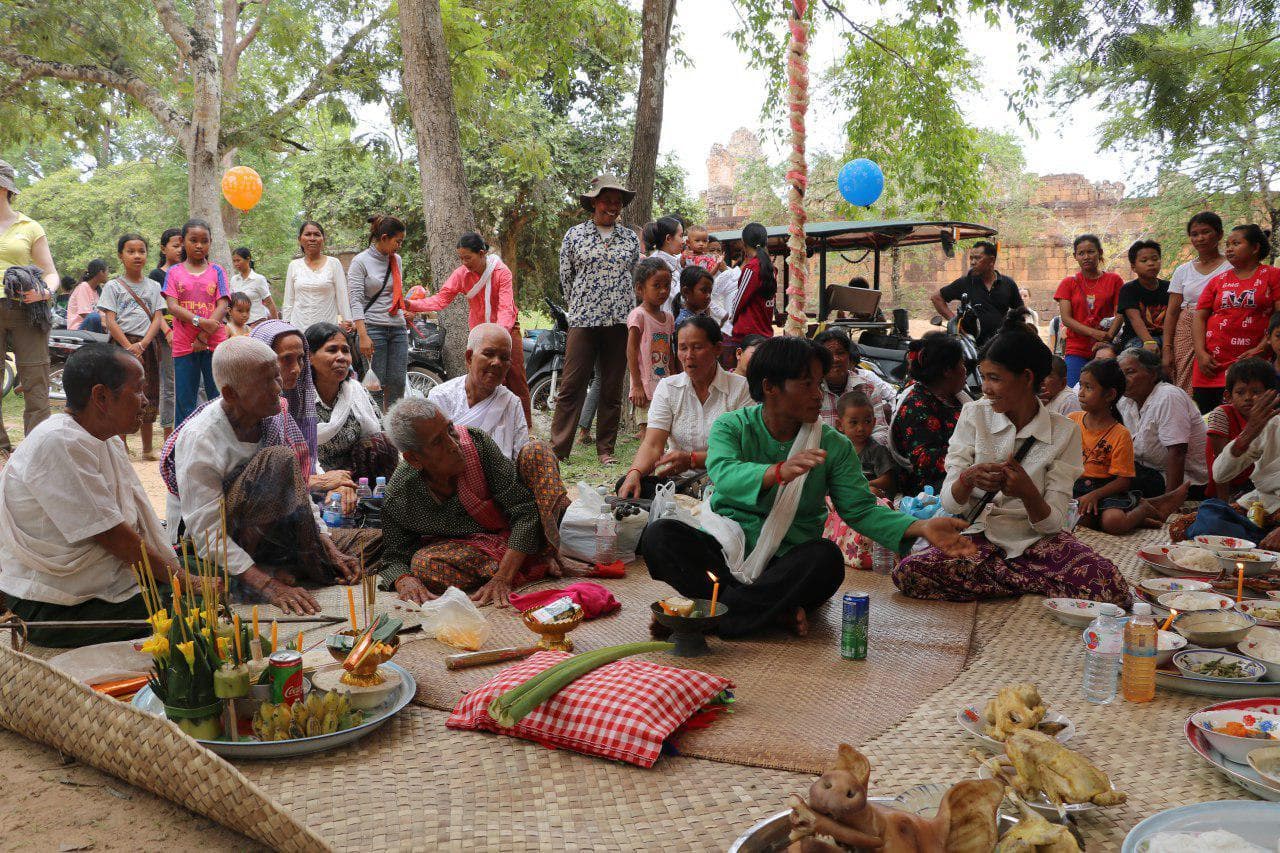Rain ritual (ពិធីបុណ្យសុំទឹកភ្លៀង) is still being practiced in Cambodia though they are not as common as they used to be. We only have 2 seasons here: the dry season (November to April) and the rainy season (Early May to late October). Just like this year, sometimes it takes longer for the rain to start even if it is past the rainy season. This is why people in some areas, especially in rural areas that need to start growing rice, practice the ritual. We are going to learn a bit about the rain ritual in Cambodia today, let’s get to that below.
The Preparation For The Ritual

First of all, there are 2 reasons that we practice the rain ritual. One, it is one of the traditional rituals that we have been doing for many generations for both happiness and rain. And another reason is the belief of receiving the rain for farmers to grow their crops. There is no specific date for the ritual but people normally practice it on the full moon of late June and early July. Once the elderlies agree to practice the ritual, there will be an announcement for the villagers to know. Then each family will prepare meat, rice, snacks, vegetables, money, and other offerings that they can provide. Traditionally, the rain ritual takes two nights and three days: the main preparation (ថ្ងៃចូលរោង), the second day (ថ្ងៃទីពីរ), and the last day(ថ្ងៃបង្ហើយ ឬ ថ្ងៃឆ្លង).
The Mahabali Preparation
On the main preparation day, everyone gathers early in the morning at the site to decorate the place. There are flowers and various decorative items but the most important things are the two thrones. One throne is for the head of the monastery and another is for the Buddha statue, sacrificial items, and scriptures.
The Mahabali preparation requires items including clothes, pillows, candles, lotus flowers, raw meat, desserts, and many other things I can’t find words for in English. One of the most crucial things that must be in the ritual is the three traditional songs (បទកន្សែងក្រហម ផាត់ជាយ នគររាជ). When each song is finished, each prayer is made to ask for abundant rain and for the crops to flourish. The prayer also includes happiness and good things for people and animals in the village. After the three songs and prayers, the ritual is done.
The Parade Around The Site
The chosen site is usually near an ancient temple, and the parade is around the temple. At 8PM, the monks have breakfast and give blessings to the participants. By 10PM, the parade begins to circle the site three times. The parade includes the performances of Chai Yum dancers and performers that are very entertaining. At the same time, the participants have flowers, candles, and incense in their hands while walking behind the performers. There are also 4 young men wearing red Kben holding traditional umbrellas among the participants. Along with Pinpeat music and people chanting “rain, rain, rain”, the parade is absolutely lively. After lunch, the Acha (layman) will arrange another blessing ceremony by the monks again.
The Songs For The Guardian Spirits
After the blessing ceremony, the acha will announce before the guardian spirits and other spirits to bless people with the rain. The prayer is to ask for rain so that the people can grow crops and for happiness for everyone in the area. After the prayer, 11 elder women will be invited to sing 3 songs (បទជើងព្រៃ បទអុំទូកបេះល័ខ បទសារិកាកែវ). Despite the fact that the women are in their 60s and 70s, their singing voices are mesmerizing.
Final Thoughts
What you have read above is the rain ritual practiced Batheay district of Kampung Thom province. Not every region has the same practice as there are many different ways. In Takeo province, people practice their rain ritual at the Neak Ta (tutelary deity) site with traditional music and a medium involved. In Kompung Svay district of Kampung Thom province, people practice horse racing for the guardian spirits to ask for rain. It is not 100% guaranteed that the ritual will work but people still practice the rain ritual because it is a tradition. Nowadays, the rituals are not common anymore so it is very nice to see one, especially in Siem Reap this year.
Related Post: Scarecrows In Cambodia Culture
